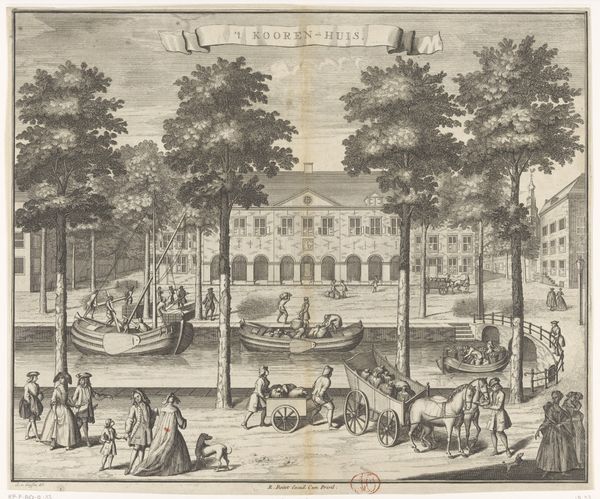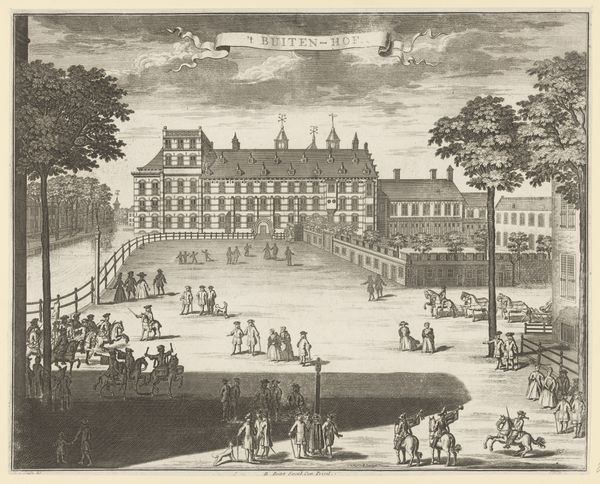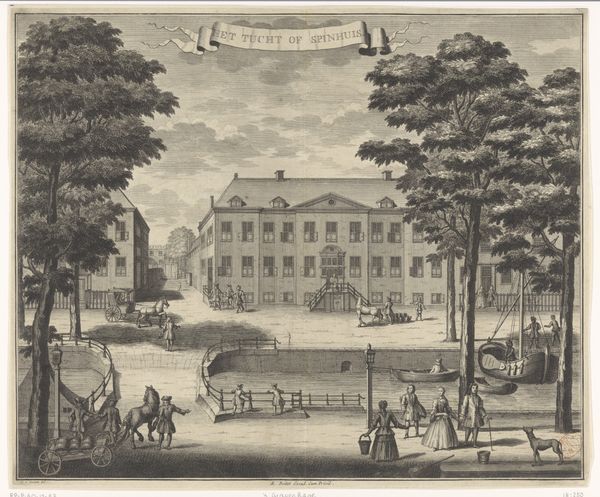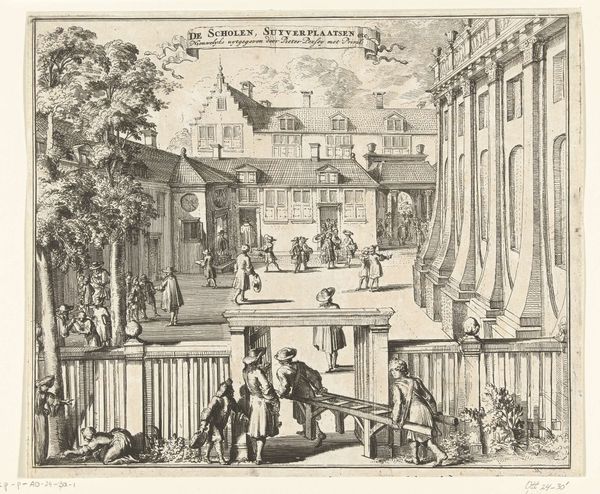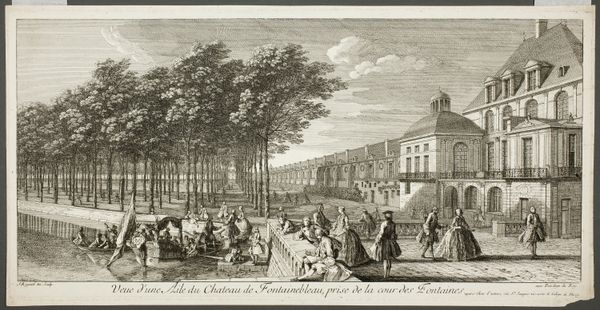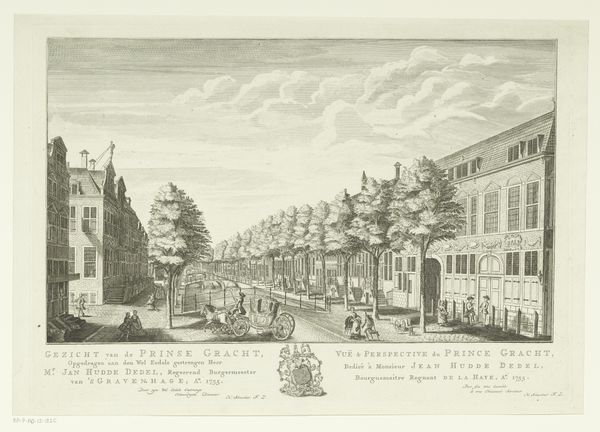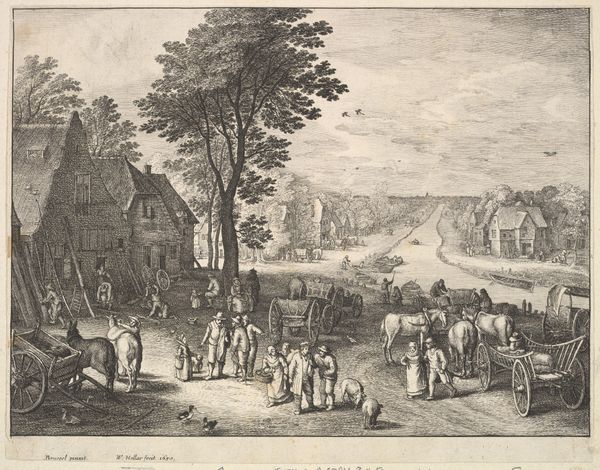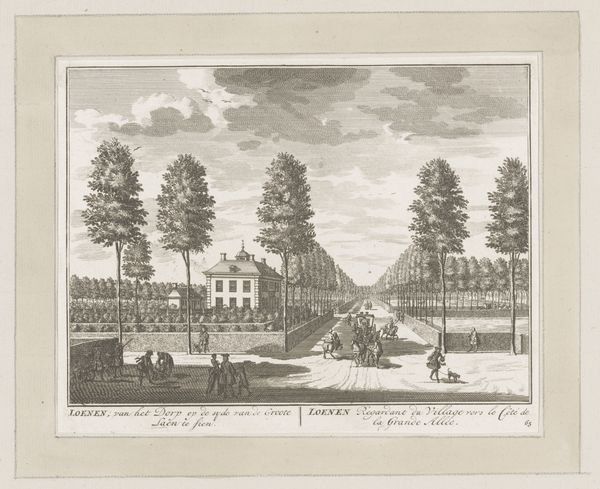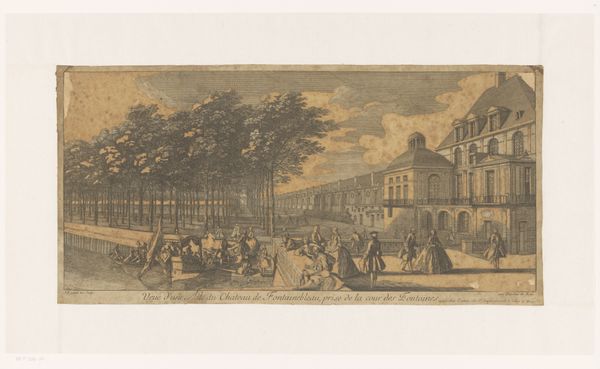
print, engraving
#
dutch-golden-age
# print
#
landscape
#
cityscape
#
engraving
Dimensions: height 281 mm, width 343 mm
Copyright: Rijks Museum: Open Domain
Curator: Here we have "Gezicht op de Boterwaag te Den Haag," or "View of the Butter Weigh House in The Hague," an engraving from between 1730 and 1736, by an anonymous artist, showcasing a bustling cityscape in the Dutch Golden Age. Editor: My immediate impression is one of meticulous detail and a certain vibrancy, even through the grayscale. Look at how the lines create a palpable sense of activity and commerce. Curator: Indeed, the composition guides our eye through the market scene. Observe how the artist uses linear perspective, drawing us from the foreground action—the workers, carts, and piles of goods—towards the more formally structured architecture of the Boterwaag itself, then the trees flanking it, and out towards the faint spire on the horizon. Editor: I'm particularly drawn to the foreground and the depiction of labor. The carts loaded with goods, the individuals pushing wheelbarrows – there’s a strong emphasis on the material exchange of the market. I wonder what kind of socio-economic narratives are embedded within this focus on goods. Curator: An interesting observation! You’re pointing to the way the materiality hints at larger economic structures. It brings us back to Dutch society at that time. Beyond the document of city life, you see a display of civic order and perhaps even a subtle suggestion of burgeoning capitalism through this organized marketplace. The visual and cultural representation of the rise of commerce are at play here. Editor: Absolutely. The print medium itself adds layers, I think. Engraving allowed for mass production, making these images accessible to a broader public, thus circulating and reinforcing these commercial ideals but also offering insight on how resources and material value flowed. It also gives rise to questions of authorship. Curator: A valid consideration. It is a striking piece because it marries form and function in the visual language that communicates and constructs power during its time. Editor: It's an image that prompts a dialogue between what is seen and what is made – how art interprets and perhaps even shapes the world of labor and trade.
Comments
No comments
Be the first to comment and join the conversation on the ultimate creative platform.

